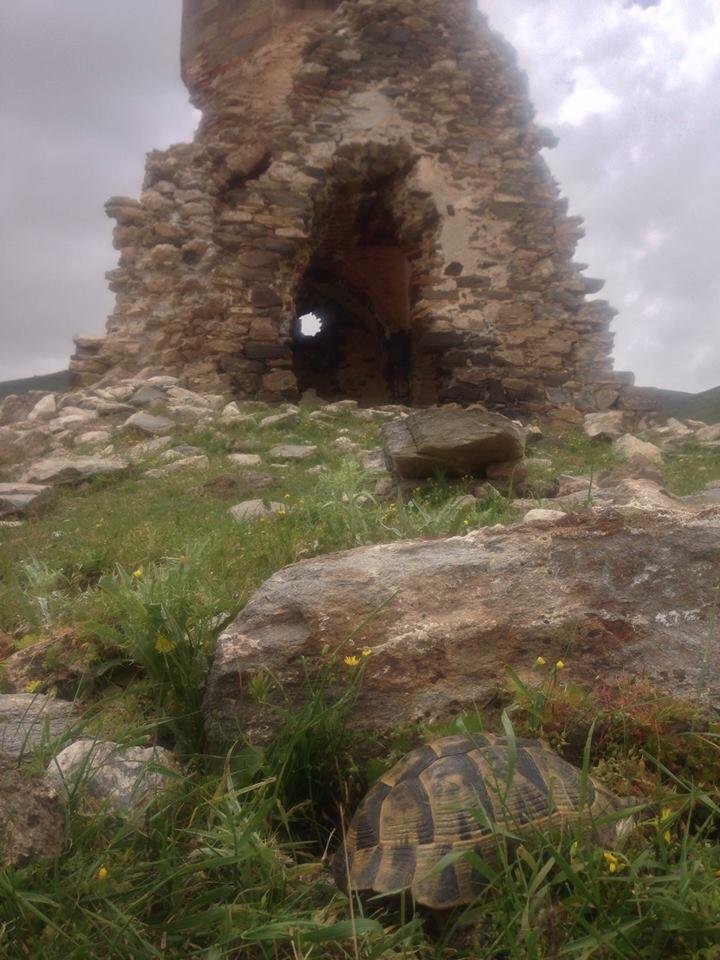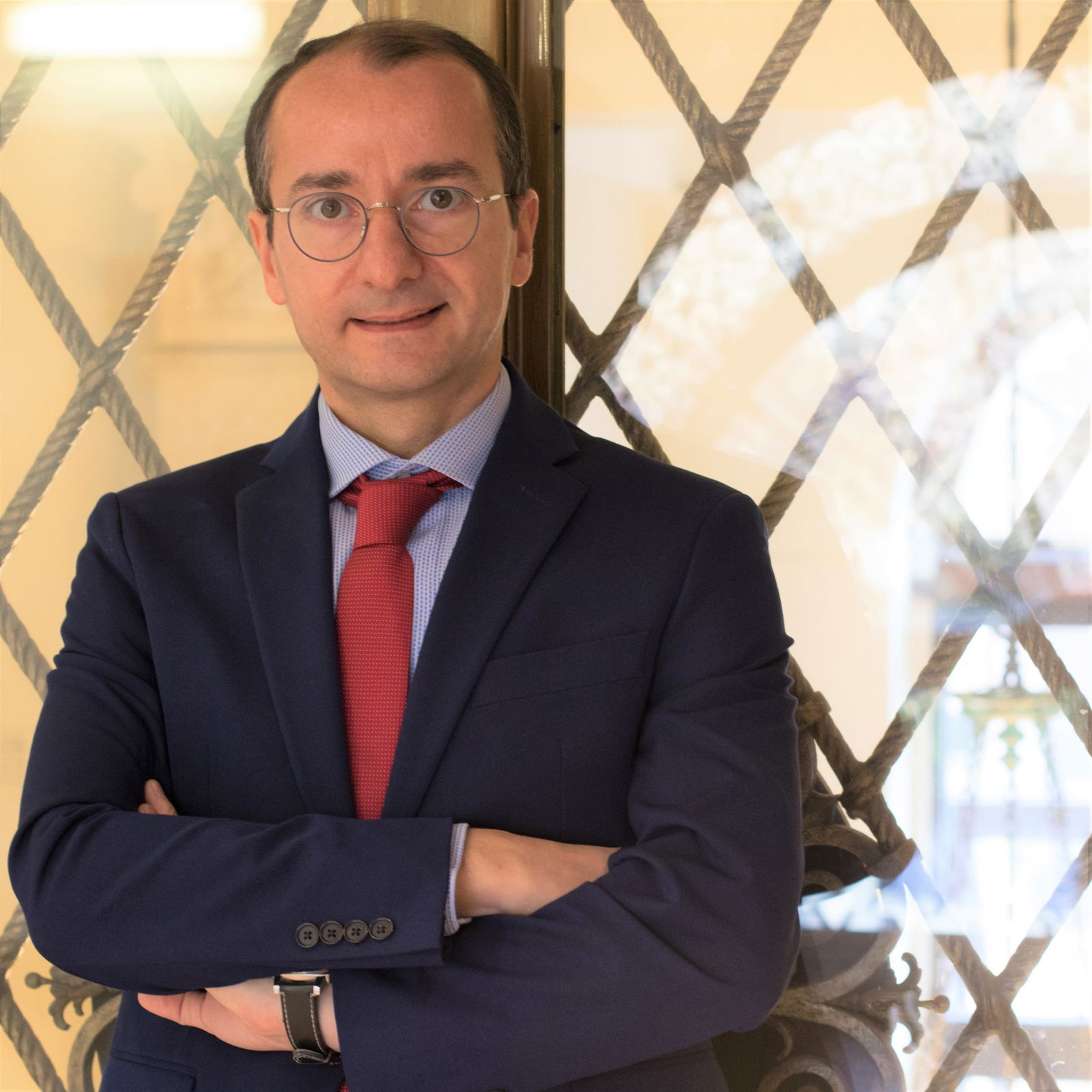Special for the Armenian Weekly
As the two of us hiked up the mountain to Arakelots Monastery in Mush under the scorching midday sun, we noticed a few tortoises along the way, but paid little attention.

Reptiles were the last thing on our minds. My friend Taleen and I were anxious to get to the ruins of the historic monastic complex, a foremost learning center beginning in the 11th century, and a symbol of Armenian defiance against Ottoman oppression since the early 1900’s.
It was here that one of the first Armenian freedom fighters, Arabo, had studied in the late 1880’s; it was here that, in 1901, a major standoff had taken place between the Ottoman-Turkish army and some 60 Armenian fedayees from Sassoun and Mush, led by Antranig and Kevork Chavush.
The complex was abandoned after the Armenian Genocide, and blown up by the Turkish military in the 1960’s. Taleen, whose ancestors hail from Sassoun, was quick to point out that the few standing walls of the monastery, deeply scarred, inspire defiance against injustice.
But I was looking elsewhere. “We are not alone,” I quipped.
Right in front of the monastery’s St. Thaddeus Church ruins, a tortoise stared at me with what I discerned to be the I-beat-you-to-this-place look.
I had come for defiance and I was greeted by perseverance.
On the hike down, Taleen had to put up with my attempts to reconstruct the tortoise’s ascent up the 6,050-foot hill.
It was a journey the tortoise started decades earlier, I told her. It inched forward without fanfare, while passersby—villagers, fighters, and pilgrims—paid little attention to it.
Most likely the tortoise didn’t receive any help. Perhaps teenagers playing in the area picked it up and left it off a few feet ahead every now and then, but nothing more!
I am sure there were other tortoises that tried to dissuade it from what they considered an endless, unrealistic march. They told the tortoise that where they were was just fine.
But our tortoise remained unfazed and soldiered on, one inch at a time.
And one day, the tortoise felt the footprints of Arabo under its webbed feet, looked up, and saw the defiant ruins of Arakelots Monastery waiting for its arrival.




I know I’m in for a treat when Khatchig Mouradian writes about Armenia’s sites. The first one I read, and forwarded to all my hye and odar friends, was about Ani…”Voir Ani et mourir”.
Thank you Khatchig Mouradian for your sensitive observations.
Inspiring writing, gorgeous pictures.
Indeed Saint Arakelots Monastery is replete with history. In 1914 Troshag, the ARF organ, has posted Kevork Chavoush’s autobiography of sorts where he notes: “My age is unknown, I have do date. My mother and father very much desired that I learn how to read so that I would become a priest and be of help to them. For that purpose, on May 14, 1886 they sent me to Saint Arakelots Monastery. I stayed there two years.I learned that there were Armenians in the area, Arapo and Levon were there and at times they used to come to the monastery. I seized every opportunity to render them small services. I was fascinated by them. On May 7, 1888, I resigned from the monastery and I went home. From there on my work continued to be with guns”. We have a single snap shot of him taken by Vahan Papazian (Goms) on the Island of Akhtamar, next to a rock claimed to be close to the cathedral. Turtles are long lived, who can guess what transpired in its lifetime.
Thank you Khatchig Mouradian for your symbolic writing and haunting pictures. It reminded me of the Fedaye song, Zartir Lao, where Arabo is eulogized.
Great story, but the “turtles” that you saw were most likely a species of tortoise named “Testudo graeca ibera”, or one of it’s sub-species, present throughout the Mediterranean countries of southern Europe and north Africa. Wonderful, peaceful creatures!
The Immortal Turtles of Arakelots Monastry
In the early 1980th I also walked with my friend Tadevos up that mountain from Mush to Arakelots Monastery. It was a real hot summer day. Up on the mountain we shot several photos of the church and the Monastery. Later we talked to some Kurdish shepherds which were looking after their sheep with a lot of boys near to the Monastery. Two, three hours later we walked all the way back in the heat. Half a mile before reaching Mush again,we sat down in the shadow of a tree growing by the side of the broad street. We regarded an animal crossing slowly the street very near to us.
“Look, Tadevos a hamburger crossing the street !” “You fool, it´s a turtle, not a hamburger”, my friend replied. “It´s a hamburger,” I insisted.
I had heard a car coming from the left. I was totally sure to know, what would happen. Right, it made two times : Clack – clack and Tadevos jumped up from the stone he sat on, shaking a fist behind the Turkish driver and shouting bad curses after him.
Khatchig is not only a great scholar but a remarkable story teller. Khatchig’s
lone “unfazed turtle” is richly endowed.
We are defiant and persevere. Great write up!